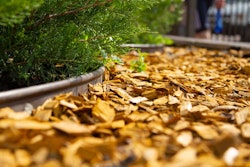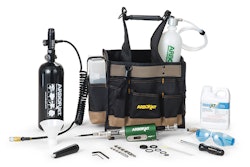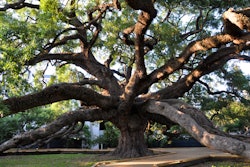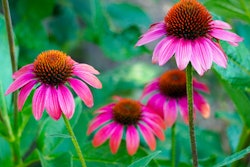Opting to spend more on something that will last longer is a trend emerging in an economy where consumers want their discretionary income to go a little further. Impulse purchases are being traded for items that offer more durability, even though they may cost a little more. Instead of incremental spending throughout the year, consumers are saving up for and putting more research into spending on items with lasting value. This translates even into their landscaping, according to Gail Tunis, a garden designer who manages the Garden Maintenance Division of Borst Landscape & Design in Allendale, New Jersey.
“It may seem that, in this economy, clients would be tempted to go with annual plants, simply because they are less expensive,” Tunis says. But actually, the opposite is true. They see the value in something that is going to endure for more than one season. “People are spending more time at home and they want to optimize their living space – inside and out. Having beautiful, colorful gardens adds enjoyment to time spent outdoors, and makes a backyard more of a destination. To achieve this, we recommend predominately perennials because they will return year after year, so are a better value.”
Tunis and her crew still use annual plants to add color and highlight the perennial plants in the garden.
Choosing wisely
Some clients are very specific and others speak in generalities. One client may supply you with a list of every plant they want included in their flowerbeds while another will say, “I want something pretty with lots of color.” Either way, it’s your job to lead them in the right direction. If a client wants plants you know won’t thrive in their flowerbed, be prepared to offer alternatives. Impress your clients with your knowledge of new varieties and always provide suggestions that will result in a mix of plants that not only meet your design requirements, but also lend character.
“When designing a perennial garden, listen to your client and assess what they desire. Sometimes they want plants that are a little different. Sometimes they want plants they are familiar with or have seen in their neighbor’s yard. You’ll be doing them a favor by suggesting other plants that are similar to what they want – only better,” advises Tunis.
“They may want a shade garden with foliage plants and color, but are tired of Astilbes and Hostas. In this case, you could use Brunnera, Bergenia, Rodgersia, Pulmonarias and some of the newer Heucheras,” she says.
For the client who wants bright colors, Tunis suggests Ligularias, Primulas and Chelone. “For drama, use Cimicifuga, monkshood, Anenome, Tricyrtis and ferns like ‘Lady in Red.'”
Choosing the right plants involves more than sticking to the tried-and-true varieties that keep you in your comfort zone. Tunis encourages landscape contractors and designers to branch out. “Instead of using standard Echinacea ‘Magnus,’ use some of the newer cultivars like the gorgeous colors in the ‘Big Sky’ Series, or the interesting shapes of ‘Razzmatazz’ and ‘Double Decker,'” she says.
“Bearded irises are too messy and invasive, so instead, use the Siberians and Ensatas. I love cottage garden flowers like foxgloves,” says Tunis, “but most of them are biennial, so I opt for a more perennial variety of foxglove, Digitalis ambigua. Black-eyed Susans are too common, so I recommend something that has a similar look, like Heliopsis ‘Summer Sun’ or ‘Summer Nights.'”
You can find out more about these and other perennial plant varieties online (www.perennials.com is a great resource), or by visiting your county extension agency.











